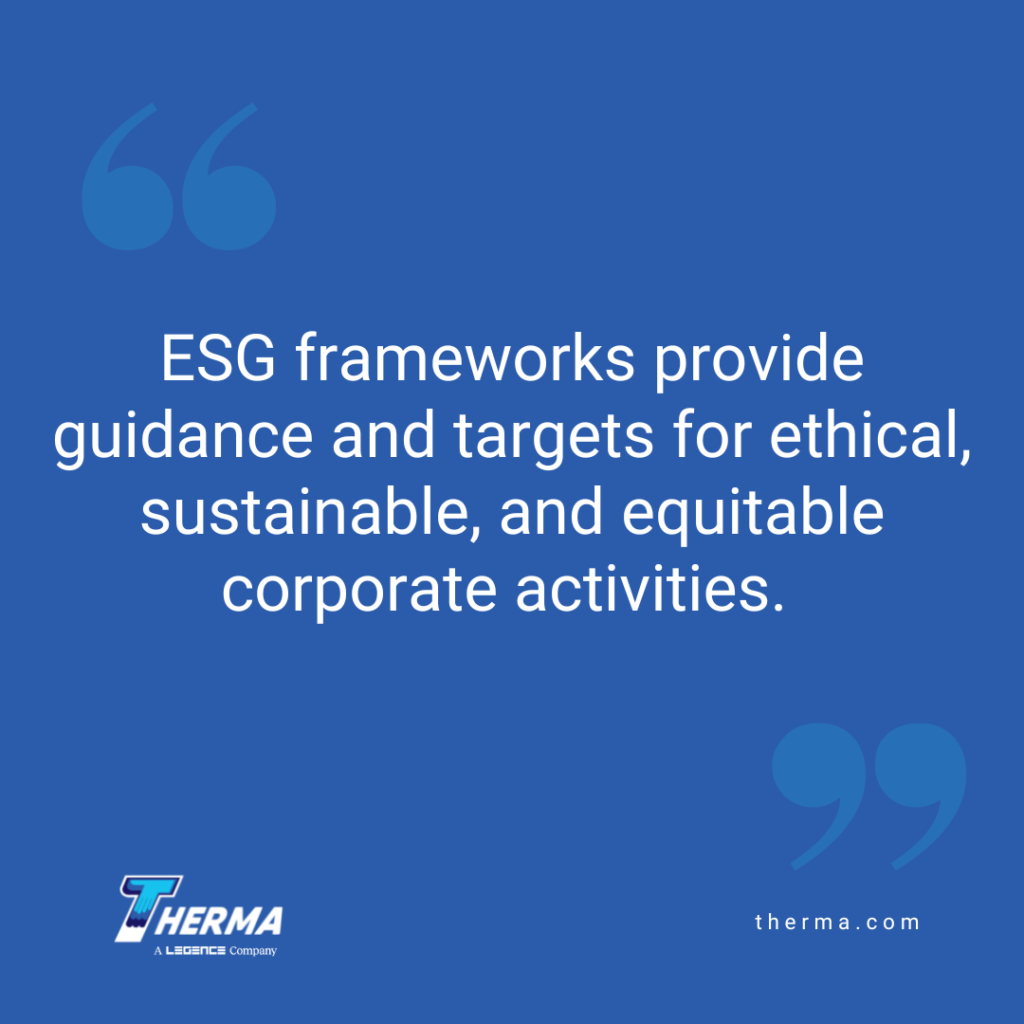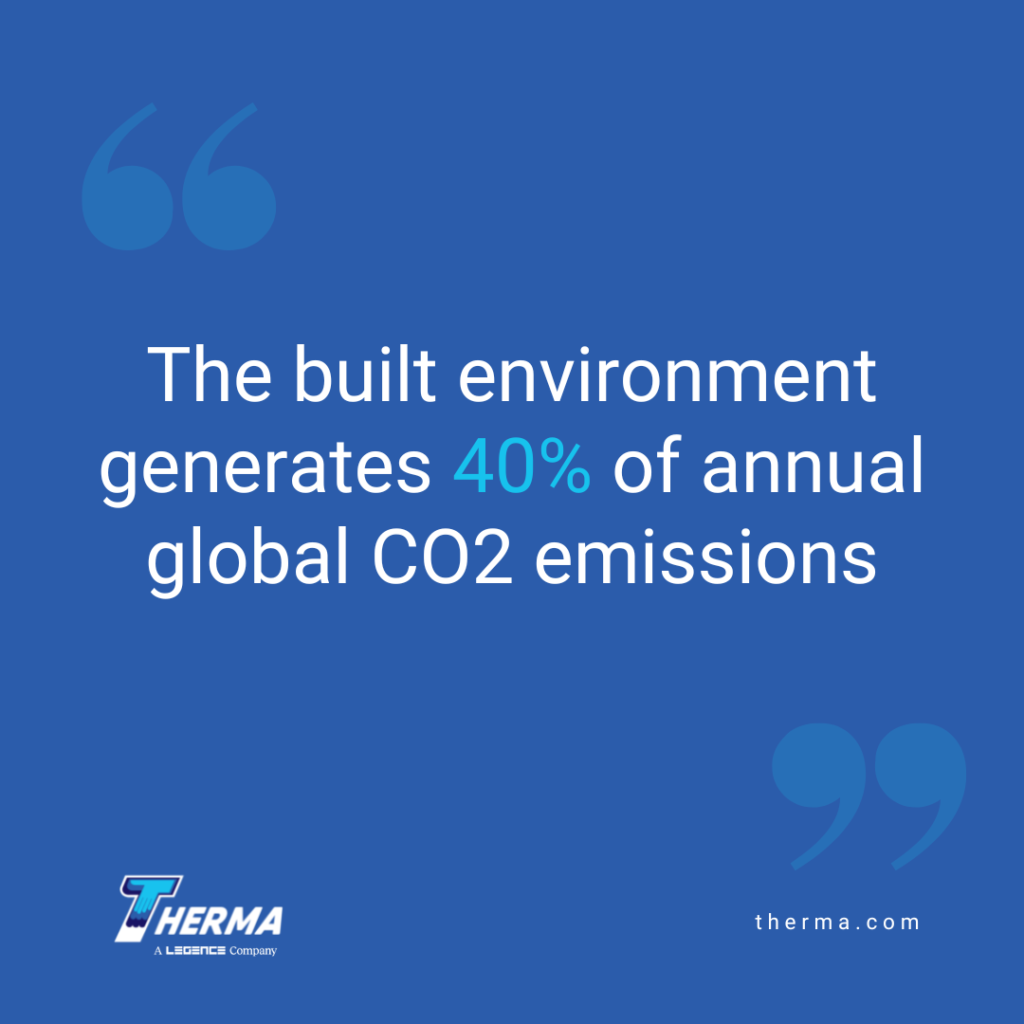by Ali Kriscenski
Environmental, Social, and Governance (ESG) has become understood as a useful framework to demonstrate best business practices. In this article, we’ll take a look at what ESG is, why it is important, and how it can strengthen your business.
What is ESG?
ESG frameworks provide guidance and targets for ethical, sustainable, and equitable corporate activities. As the uptake of ESG becomes more mainstream, businesses have the opportunity to utilize lessons learned and case studies that strengthen the business case for ESG initiatives. The metrics for ESG relate to the three pillars of sustainability–environmental, social, and economic–that can create long-term viability for corporations of all sizes.
Environmental
Environmental considerations for ESG include how business activities affect natural resources and ecosystems, both locally and globally. These can include:
- Air Quality / Pollution
- Water Quality / Pollution
- Renewable Energy / Energy Conservation
- Carbon Emissions
- Waste Management
- Deforestation
Social
Social metrics for ESG programs can relate to local impacts, such as employee well-being, or global impacts, such as fair-trade supply chains. Social ESG factors can include:
- Diversity, Equity, & Inclusion (DEI)
- Human Rights (in procurement/investments)
- Health & Safety
- Charitable Giving
Governance
As a long-term factor in corporate structure, governance can significantly impact the culture and resiliency of a company. The processes and financial values of a business are reflected in its leadership structure. These elements can include:
- Employee Ownership
- Leadership Diversity
- Succession Planning
- Executive Compensation
ESG in the Built Environment
According to the International Energy Association (IEA), the built environment generates 40% of annual global CO2 emissions. About 27% of that figure is from building operations. Additionally, buildings use 30% of global energy consumption.
As a major source of energy demand and carbon emissions, buildings and facilities are key components in successful ESG initiatives. Improvements to building structures and systems can have positive effects on ecosystems, employees, and communities. Capital investments under ESG frameworks can strengthen corporate financial resiliency through lowered operating costs and increased funding opportunities.
Corporate initiatives within ESG frameworks can increase employee well-being through healthy indoor environments, safety programs, fitness amenities, and equitable corporate structures. The transparency that ESG cultivates can help improve regulatory reporting, community engagement, and PR relations.

Risk & Reputation Management
ESG programs can help identify current or potential risks to your company related to international or federal laws, supply chain sourcing, pollution, or brand reputation. Worldwide, standards and certification organizations have established frameworks to protect natural resources, workers, local communities, and companies along the supply chain. The Forest Stewardship Council (FSC), Fairtrade, Rainforest Alliance, and USDA Organic are just some of the organizations ensuring ethical products. These types of standards can be used by companies in procurement strategies to avoid issues of legality, human rights abuses, or environmental impacts.
Shareholder & Investor Relations
Companies that have demonstrated commitment to long-term ESG initiatives are becoming increasingly valuable to investors. The transparency and reporting that ESG programs create allow companies to detail energy efficient capital investments, employee retention initiatives, and other general improvements that have led to stronger financial standing. Investors are reacting to market forces where consumers have become more eco-conscious. Companies that align with ethical, sustainable values are seen as better investments.
Operational Benefits of ESG
The benefits of initiating an ESG program can be measurable financial goals, while others are more palpable by subjective measures. When well executed, ESG initiatives can create operational efficiencies that resonate throughout a company. Chobani’s employee ownership is one example of how ESG permeated the corporate culture of a $5 billion business. IceStone’s resiliency in the aftermath of Hurricane Sandy was directly related to the company’s leadership and equitable structure. These are just a few examples of how an integrated focus on environmental, social, and governance aspects of the business has created more robust companies.
ESG programs can help identify inefficiencies, risks, losses, and other factors that counteract success. These can be related to employee turnover, building management, employee benefits, fleet management, and many other aspects of operational activities. Some ESG improvements are simple efforts that make big changes. For example, when UPS worked to eliminate left-hand turns to avoid idling and shaved millions off of its annual fuel costs.
Building System Investments
Capital investments in building systems–HVAC, electrical, plumbing, etc–can be central to successfully implementing ESG frameworks. Technological advances in HVAC systems, power generation and distribution, and building controls give building and facility managers leverage to make significant impacts on long-term energy and resiliency strategies.
Since buildings consume significant energy and produce a large portion of emissions, working on HVAC and other building systems improvements through an ESG lens can create significant benefits. ESG initiatives can lead to lowered energy use, long-term energy savings, decreased operational disruption, and improved occupant comfort and wellness.
There are innovative energy investments taking place throughout manufacturing, commercial, academic, healthcare, and other industry facilities. The increase in severe weather and subsequent operational disruptions has made operational resiliency a facility management priority. Integrated systems that produce onsite fuel or electricity, recapture thermal energy and create energy to utilize for heat and power are becoming more attainable and commonplace.
Implementing ESG Initiatives in Your Facility
The investment in building systems updates or replacements is a significant budgetary item at any scale. Large systems for facilities and campuses can include a wide array of integrated components that require specialized design and build expertise for maximum ROI. Systems that deliver on ESG goals can include innovative equipment such as high efficiency CHPs (combined heat and power or cogeneration), fuel cell microgrids, or next-generation photovoltaic solar arrays. The benefits of these investments are long-term improvements to operating costs, employee safety, and occupant comfort. The engagement of a skilled professional, seasoned in ESG capital investment programs, will ensure the most benefits are realized from investments in HVAC, electrical, and other building systems. Contact Therma today to get started >>
AUTHOR BIO
Ali Kriscenski was trained in high-performance building design at Boston Architectural College. She has worked with leading architecture and construction firms in NYC and New England and served on the executive team at the Forest Stewardship Council International. She was the managing editor at Inhabitat and has worked pro bono for the Green Building Institute, ISEAL Alliance, and Habitat for Humanity.
Sources
Center for Climate and Energy Solutions – Microgrids improve resiliency, efficiency
NASDAQ ESG Advisory – Attract Long Term Capital and Enhance Value Creation
ACHR News – HVAC Industry Helps Customers Reach Their ESG Goals








